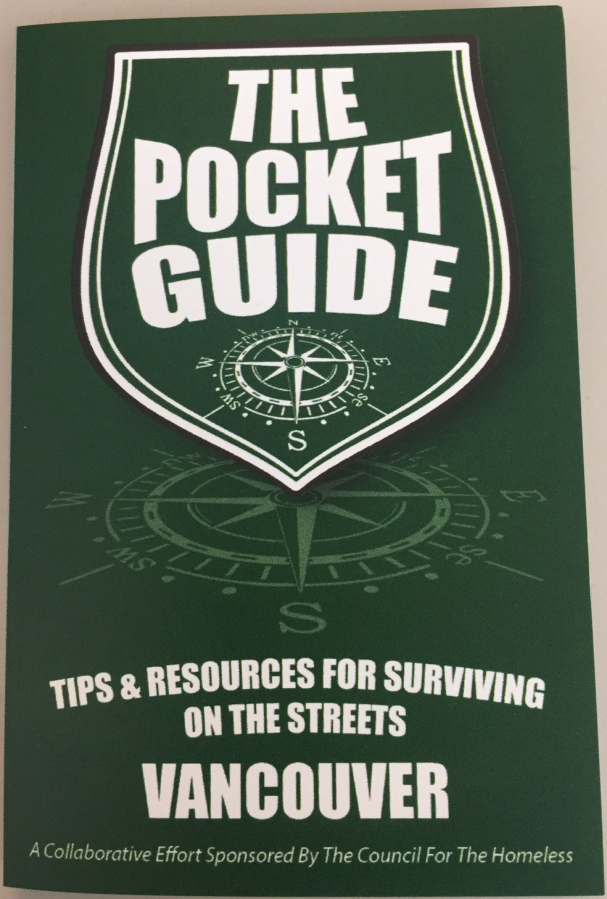Being newly homeless is unnerving. Who do you call? What do you do? Where do you go? How do you survive winter?
Homeless advocates recently created a new waterproof and tear-resistant pocket guide to surviving on the streets in Vancouver. The Pocket Guide has safety and weather-related tips, along with local laws and ordinances on one side. The other side lists important numbers and resources such as day centers and places to do laundry, take a shower and eat a meal.
The guide was the idea of Lois Smith, a local nonprofit consultant, volunteer and board member at Friends of the Carpenter.
After talking with people last winter about how they survive on the streets, she began wondering if there was a way to communicate all of those survival tips to people who need them, namely people who are new to homelessness. She jotted down an idea on a sticky note for a weatherproof, tear-resistant guide small enough to fit in a pocket. Later, she outlined what such a guide would look like and the kind of information it would contain.
Smith and a team of volunteer advocates — Jamie Spinelli, Wendy Bukoski, Shelly Gaylor, Lonnie Klugman and Tom Eaton — worked for months on the project with graphic designer Phil Verry. Hundreds of volunteer hours went into making the guide.
“I’m grateful that I didn’t throw out that sticky note many months ago,” Smith said.
The guide is folded accordion-style and has five panels with information on each side that includes tips such as “if you want to keep it, tie it to your body” or “looking homeless can keep you homeless” or “stuff jackets or sleeping bags with newspaper for insulation to keep warm.”
The vast majority of the tips came from people who are homeless or used to be homeless. They also made design suggestions, such as printing the guide on colored paper so it doesn’t catch glare from the sun. More than 150 tips were submitted and had to be whittled down so that they could fit. The guide is 2.8 inches by 4.25 inches when folded up, small enough to fit in a pocket or most cellphone cases.
The guide has important numbers such as a new street outreach line that people can call if they need tarps, tents or other supplies. And it includes local laws and ordinances, including a recent change that makes it illegal to camp in front of public libraries. The guide isn’t as extensive as the Clark County Resource Guide, but lists resources that are the most relevant to living outside.
The day before going to print, Smith learned that the men’s homeless shelter would no longer offer showers to people living outside, and that Food with Friends had stepped up to offer a mobile shower trailer. So, last-minute changes were made to The Pocket Guide before it went to print.
“It’s as updated as it could possibly be,” Smith said. “One person said, ‘If I had had this sooner, it might’ve helped me remain off the streets.’ ”
Rather than being made out of paper, which disintegrates in the rain, it’s made out of Synaps, a polyester paperlike material. The Council for the Homeless sponsored the cost of printing 2,000 copies, which was $1,580.
By the end of this week, most of the first 1,000 copies will already be distributed, Smith said. So far, 28 distribution sites have been identified, which include churches, outreach groups and the Clark County Jail’s re-entry program. Other organizations working with people who are homeless that would like to get copies of the guide can contact Smith at lsmit2389@yahoo.com or 360-326-3970.
Smith said she’d like to get all the copies distributed before cold weather hits. And, she’d like to get another sponsor to print more copies. The guide will soon be online, at www.councilforthehomeless.org, so people can view it on their cellphones.





